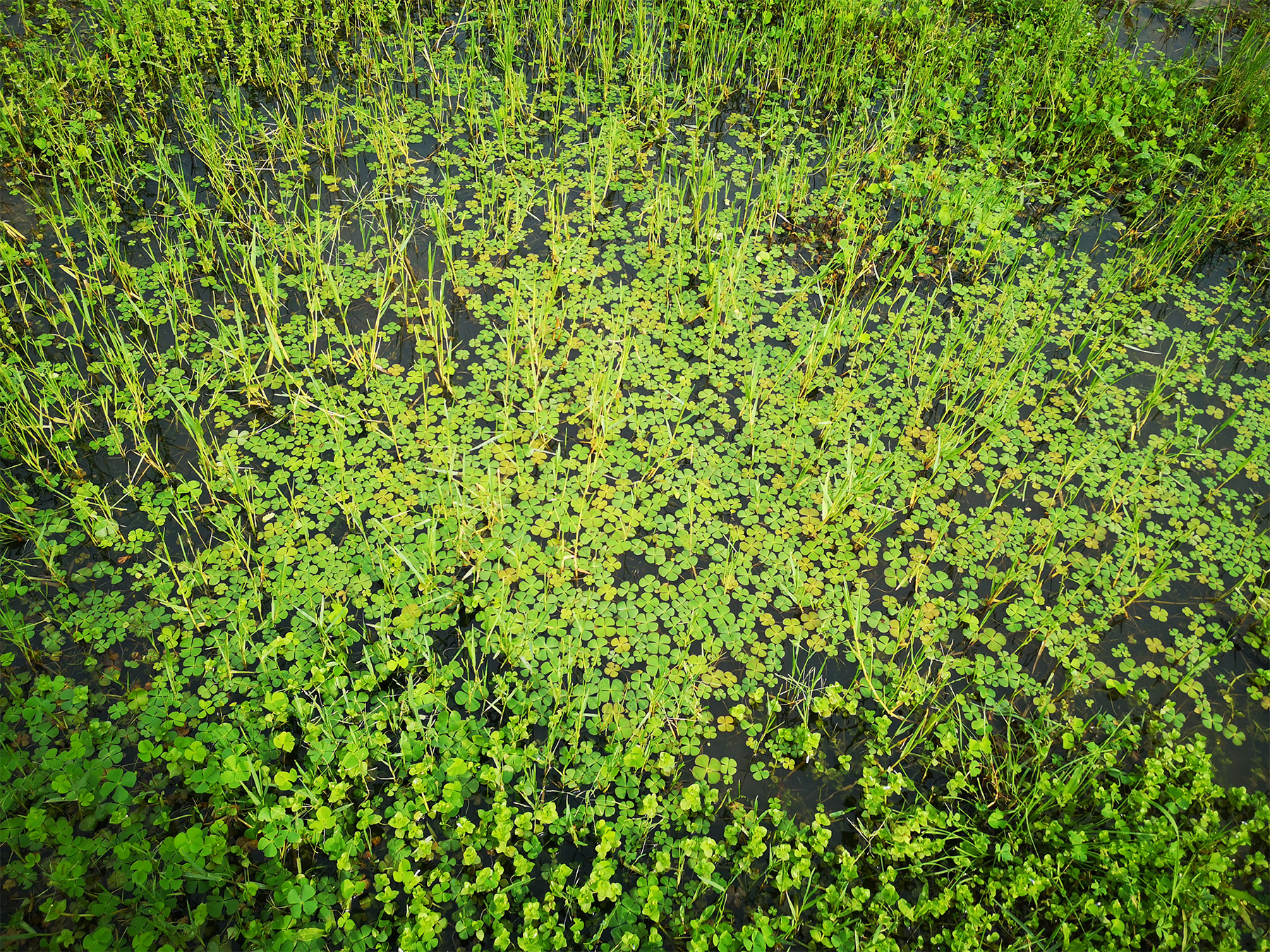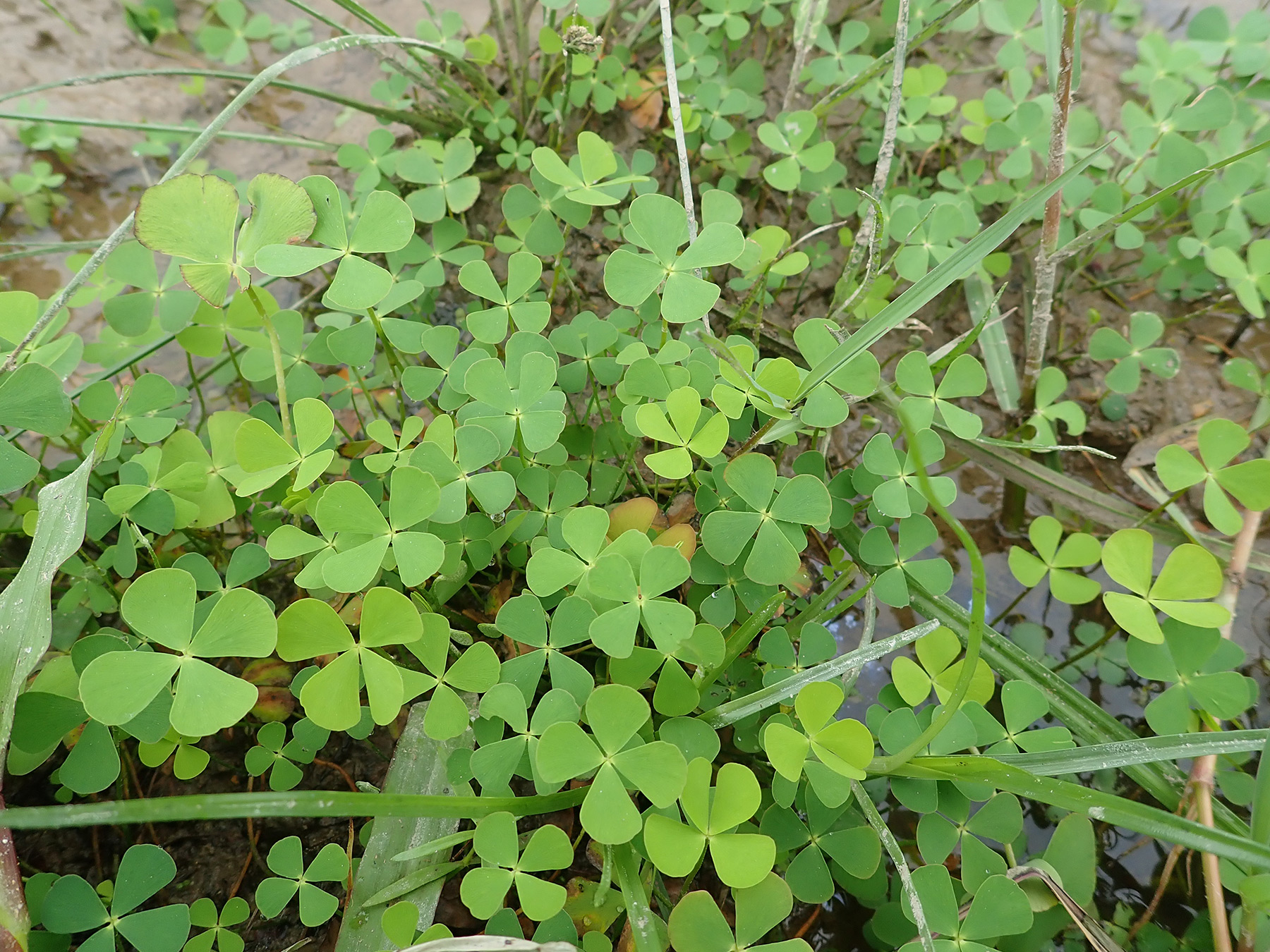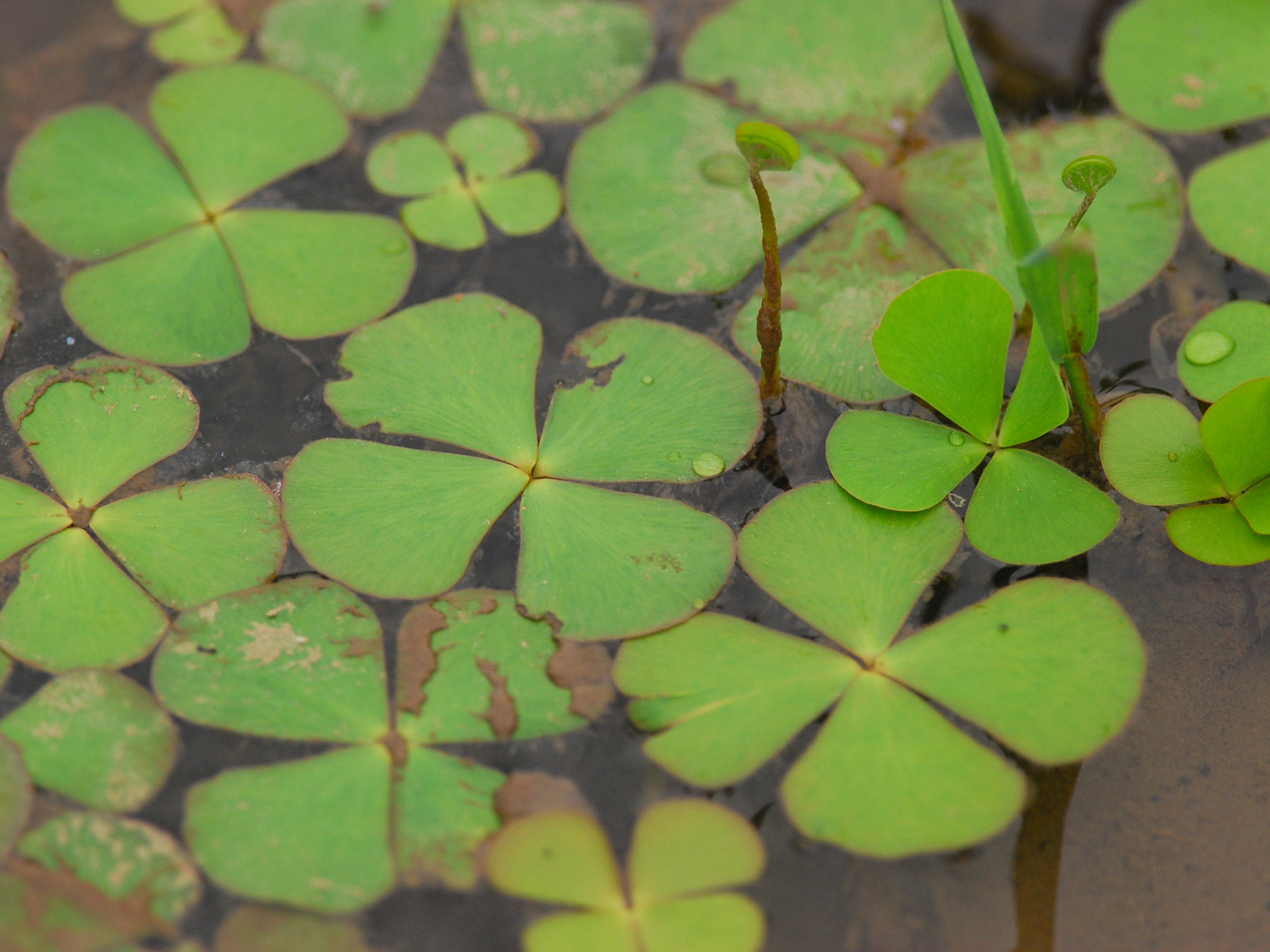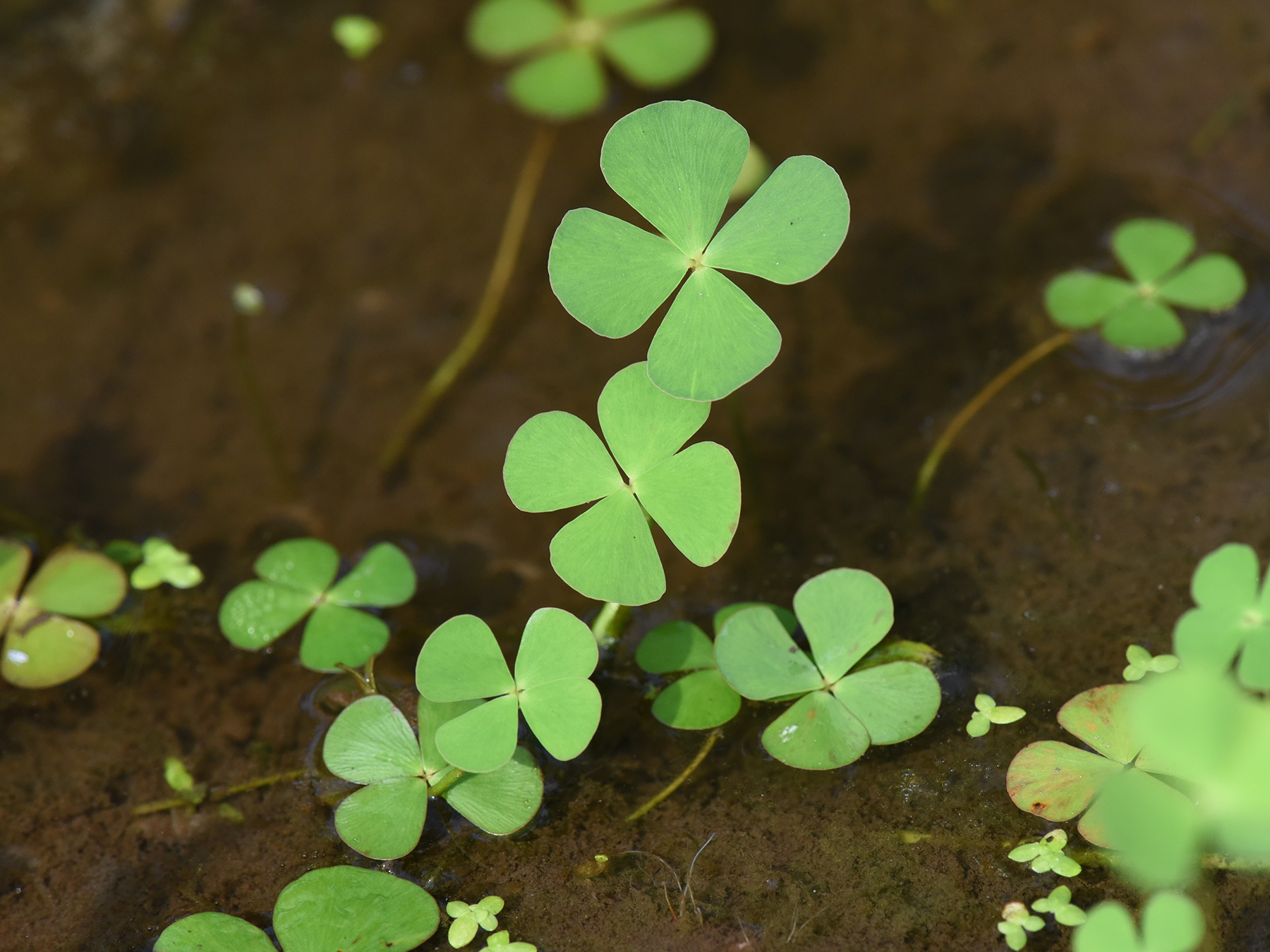"That if any man walking in the fields, find any four-leaved grasse, he shall in a small while after find some good thing."– John Melton, 1620
This "four-leaved grasse" mentioned by John Melton, an English writer in the 17th century, refers to four-leaf clovers, a rare variation of the three-leaved White Clover (Trifolium repens). It is widely believed in the West that the four leaves symbolise fame, wealth, love and health, and that the one with a four-leaf clover enjoys the prowess of seeing fairies, as well as recognising gods and evils, free from evil harms.
Seeing a big patch of dense Water Shamrock (Marsilea quadrifolia) for the first time in the marshes in Pui O was really beyond expectation. I thought I was very lucky, as it is also known as the Four-leaf Fern! It is a rare emergent or floating-leaved plant in the wetland habitats of Hong Kong, which is distinctly different from "Lucky Clovers", the well-known symbol of luck of European origins. It is very interesting to note that the leaves of Water Shamrock fold together in the evening as if it is about to sleep.
What is luck then? Coming across four-leaf clovers is regarded as luck. How about meeting rarely-seen creatures in the wild? Can Hong Kong's disproportionately rich biodiversity compared to its size be considered luck to us? As a nature lover, I truly think that all are luck. I hope my next generations could enjoy such luck to appreciate and explore, as in the past, the wonders of the great nature.
It is beyond doubt that our nature presents the mesmerising and precious gifts to human beings, namely the great diversity of wildlife. Putting extra effort into conservation work is a prerequisite of sustainable natural assets.



